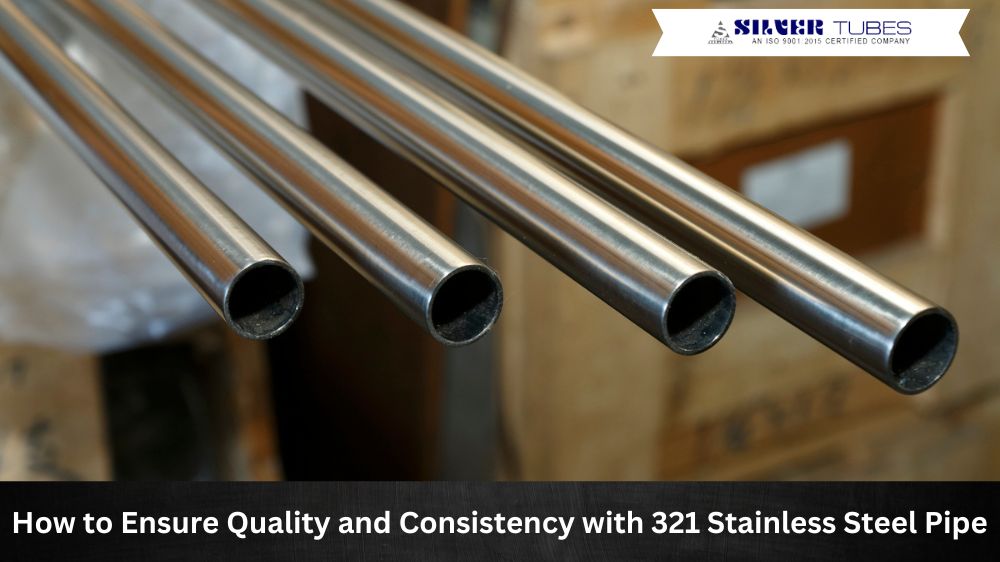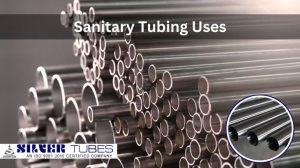Pipes are essential in many industries, and choosing the right material is crucial to avoid costly repairs and replacements. Stainless steel is a popular choice due to its durability and strength. However, not all stainless steel pipes are created equal. This blog post will focus on 321 stainless steel pipes and share tips on ensuring their quality and consistency.
What is 321 stainless steel pipe?
321 Stainless Steel Pipe is a titanium-stabilized, chromium-nickel austenitic stainless steel tubing used for corrosive and high-temperature service. It has exceptional resistance to intergranular corrosion after exposure to temperatures in the chromium carbide precipitation range of 800 – 1500°F (427 – 816°C). Its superior resistance to thermal fatigue and cyclic heating makes it ideal for use in these environments. Furthermore, its low carbon content increases its resistance to intergranular corrosion while providing an improved response when exposed to extreme temperatures.
Ensuring Quality and Consistency with 321 Stainless Steel Pipe
Check the grade and composition:
The grade and composition of 321 stainless steel pipe determine its properties and performance. Make sure to specify the grade and composition of the piping material before ordering to ensure its compatibility with your application requirements. 321 stainless steel is a titanium-stabilized austenitic steel that offers excellent resistance to corrosion, high temperatures, and intergranular corrosion. Its composition should include 17-19% chromium, 9-12% nickel, and 0.08% carbon maximum.
Choose a reliable supplier:
Another critical factor in ensuring quality and consistency with 321 stainless steel pipes is choosing a reputable supplier. Look for a supplier with experience and expertise in the industry and a proven track record of providing high-quality products. A reliable supplier should offer product certifications and documentation, including material specifications, technical data sheets, and testing reports.
Verify the manufacturing process:
The manufacturing process of 321 stainless steel pipe plays a significant role in its quality and consistency. Ask your supplier about their manufacturing process, including the type of machinery, methods of quality control, and inspection procedures. The manufacturing process should follow industry standards and best practices to ensure the pipes are free from defects, cracks, and other flaws that can compromise performance.
Conduct regular inspections and maintenance:
Even with high-quality 321 stainless steel pipe, regular inspections and maintenance are necessary to ensure its longevity and performance. Inspections can detect any signs of wear and tear, corrosion, or damage early on, allowing for timely repairs or replacements. Regular maintenance, such as cleaning, lubrication, and adjustments, can also prevent issues and prolong the lifespan of the pipes.
Follow the installation guidelines:
Finally, it’s crucial to follow 321 stainless steel pipe installation guidelines to ensure its quality and consistency. Improper installation can lead to leaks, cracks, and other issues compromising its performance and safety. Ensure to follow the manufacturer’s guidelines and recommendations for installation, including the type of fittings, pipe supports, and welding procedures.
Conclusion:
Quality and consistency are essential when it comes to 321 stainless steel pipes. By checking the grade and composition, choosing a reliable supplier, verifying the manufacturing process, conducting regular inspections and maintenance, and following the installation guidelines, you can ensure that your pipes will perform well and last longer. Don’t compromise on the quality of your pipes, as it can lead to costly repairs, downtime, and safety hazards. Choose the right materials and follow best practices to ensure your pipes meet your specific application requirements.






